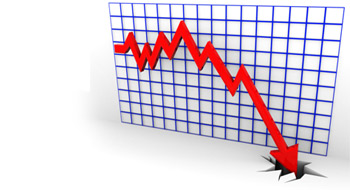

On Monday, after a grim day the Friday before, the Dow Jones industrial average dribbled downwards throughout the day to finally plummet more than 1,500 points about an hour before the closing bell. During the following hour, it bounced back up several hundred points only to split the difference by markets’ close, falling by 1,175.21 points over opening for a loss of 4.6 per cent.
This drop was the largest single-day point loss in the history of the index. Just like that, almost two months of steady gains evaporated. The volatility continued on Tuesday, with major indexes in Asia and Europe falling while U.S. markets saw early gains and then fell again.
While the swings have some people worried, what was unusual about Monday’s developments wasn’t the drop itself, according to Brian Madden, senior vice-president and portfolio manager at Toronto-based Goodreid Investment Counsel Corp. What was surprising, he says, was it was the first time markets had seen such an off day in about two years.
Read: Canadian DB plans post positive returns in last quarter of 2017
“A two per cent decline [as the S&P 500 saw on Friday] is not something that should have investors trembling in their boots. It’s actually something that in more normal markets, where volatility is not so suppressed, you would expect to see a two per cent pullback in markets five to ten times in a year,” says Madden.
The roaring equity markets both in North America and abroad have helped to propel pension solvency levels ever higher amid strong returns. The Royal Bank of Canada’s pension tracking service noted that Canadian defined benefit pensions posted an annual return of 9.7 per cent in 2017, delivering a ninth consecutive year of positive results. “Global equities continued to provide strong and stable returns,” noted James Rausch, head of client coverage for Canada at RBC Investor and Treasury Services, in a news release.
Perhaps counterintuitively, recent market activity could bring relief to institutional investors that have been wondering how much longer the constant upward movement in equity markets could last amid anxiety over how long and deep a downturn would be.
Read: Global DC pension assets projected to outgrow DB in two years
“Classically, what people say is that 10 per cent is a correction, and we haven’t had one in about two years, so we’re overdue,” says Madden. “But there is nothing that necessarily says that it needs to stop at 10 per cent. We have been cautious and leery going into the year.”
So what sparked the recent volatility? Madden says many observers are attributing the sell-off to the very strong U.S. jobs report, nascent signs of wage inflation and the likelihood of tightening by the U.S. Federal Reserve. To the potential benefit of pension plans, all of those factors are having an impact on the bond market. “If you look at the 10-year U.S. treasury or the five-year or the two-year [bond], all of those interest rates are up 40 or 50 basis points year to date, which is a lot. So when you’re a pension fund and you’re calculating your actuarial liability, that’s a very important interest rate to key in on and that reduces your liability. So there’s a bit of an offset to the fact that stock markets have been in somewhat of a free fall for the last few days. Pension liabilities are also falling because interest rates are rising.”
Indeed, rising Canadian bond yields had their part to play in the highest pension solvency levels of the decade, according to a report from Aon Hewitt. The company’s median solvency ratio for the country’s defined benefit plans stood at 101.3 per cent on Feb. 1, putting them is the “best financial shape in 15 years,” noted Ian Struthers, partner and investment consulting practice director at Aon Hewitt, in a release.
Read: Fixed-income considerations at a time of rising rates
“The tide, however, might be turning for asset returns,” said Struthers. “The rising rate environment has created a simultaneous bond and equity sell-off, and if that gains traction, the impact on pensions’ financial health could be severe.”
Yesterday may have been the first indication of the turning of that tide, says Bryden Teich, portfolio manager at Avenue Investment Management Inc. He notes how unusual it was for the markets to totally avoid a day like Monday during 2017. “It has been a long time coming for a little bit of volatility to come back,” he says.
It’s because markets have gone so long with so little volatility that such a down day feels so psychologically impactful, he notes. Indeed, the latest activity could be the first sign of a return to more normal levels of volatility, he says, referring to the impact of slowly rising interest rates.
“People are going to be more awake to the market sensitivity to higher interest rates,” says Teich. “We had lived in this world where interest rates were expected to be super low forever, and they’re still incredibly low by historical norms. I think the price action in the market shows you how sensitive the market is to even slightly higher interest rates. So that’s certainly something to watch.”
Read: Strong growth, equities help pooled funds deliver 8.6% in 2017
